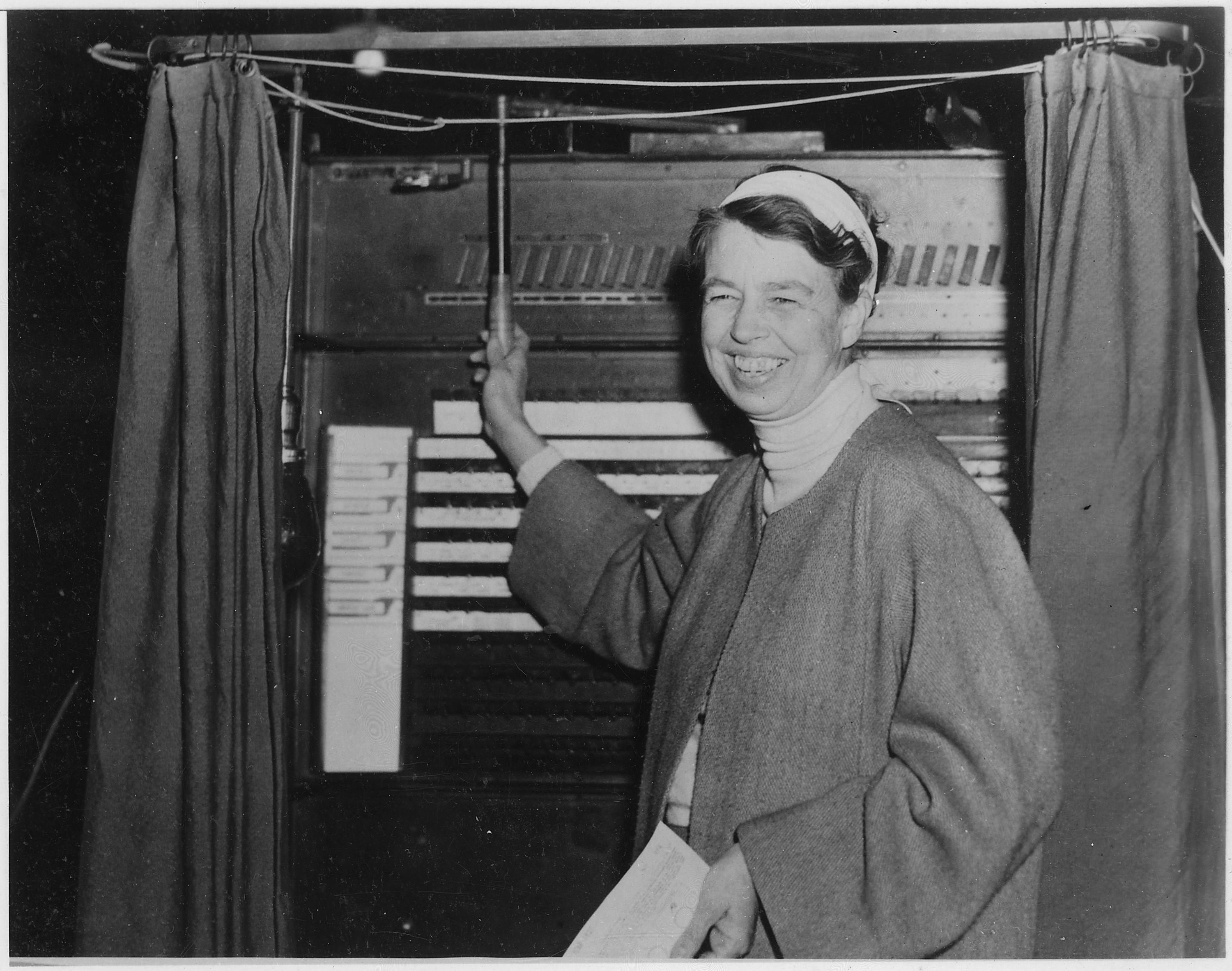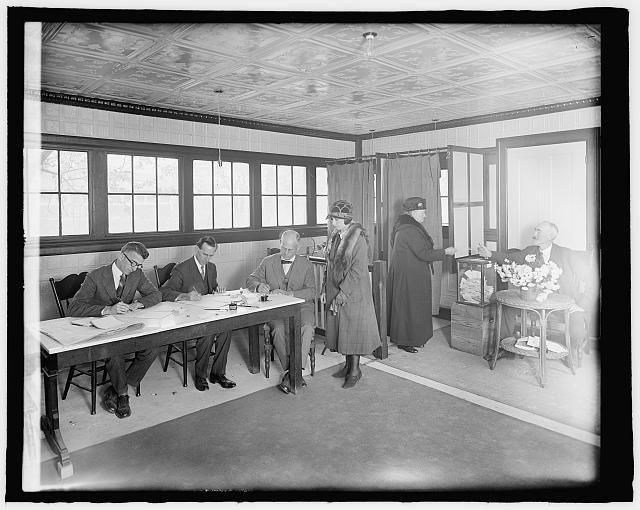Voting Booths Were a Radical 19th-Century Reform to Stop Election Fraud
An idea imported from Australia, they helped enable the “secret” part of secret ballots.

Voting booths aren’t spaces that voters give much thought: You’re in, you vote, you’re out. That’s how it’s meant to be. They are designed for quick exits; one 19th-century law stipulated an eight-minute limit for booth use, if all were occupied. But their unobtrusive nature is a relic of a major controversy in American democracy. When the United States made the controversial switch to a secret ballot, we needed a place to cast them.
Back in the 19th century, Election Day in America worked differently than it does now—there was even more drama than there is today. There were no official ballots. Political parties printed their own “party tickets.” Some states had standardized printing rules, but in other places voters could write down the names of whomever they wanted to vote for. Kentucky voted by voice almost to the end of the 1800s.
When parties printed up their own tickets, each ballot listed the party’s candidates for all the seats at stake. Most voters accepted the preselected slate, rather than the candidates that most impressed them. There were measures one could take against an undesirable candidate, though, such as physically cutting his name out of the party ticket.

Polling places might be set up in private homes or “sodhouse saloons”—usually there was some separation between the election officials and the crowd of voters, but there was no privacy. Partisans corralled people to the polls to cast their party tickets and keep other parties’ voters away—using fists, knives, guns … any effective means. Voting could mean risking your life. In the mid-1800s, 89 people died trying to get to the polls.
By the 1880s, ballot reformers were looking for a new way to run elections, one that would wrench some control away from parties and limit vote-buying and other fraudulent practices. They found it in Australia.

Since the 1850s, Australian states had been pioneering a different method of electing leaders—they let people vote in secret. This system used official ballots and provided space for people to vote without anyone knowing who they had chosen. With no way of verifying who a voter had actually cast a ballot for, parties had less power to coerce or bribe people. After a close and contentious American presidential election in 1884, when Grover Cleveland won New York—then allocated the most electoral votes of any state—by just more than 1,000 votes, American states started seeing the appeal. In 1888, Massachusetts was the first state to adopt the “Australian ballot” system, but it was followed quickly by Indiana, Rhode Island, Wisconsin, Tennessee, Minnesota, Washington, New York, and other states.
Under these new systems, states had to provide voters with voting booths and figure out what those should look like. One county in Ohio, for instance, considered buying premade iron booths, before settling on cheaper wooden stalls. Often, the ballot reform laws specified in detail what voting booths should look like and how they should be designed and deployed. New York’s law required at least one voting booth, three feet square, with walls six feet high, for every 50 voters in a district. The booths had to have four sides, with the front working as a door, and a shelf “at a convenient height for writing” that was to be stocked with “pens, ink, blotting paper, and pencils.”

Over the next century, states tweaked the design of their voting booths little by little. Sometimes, the changes were meant to accommodate new technologies. In New York, which used giant lever machines, for instance, booths were expansive, and usually installed against the wall. As electronic voting systems were developed, machine manufacturers started designing bespoke booths to fit their particular devices.
Some of the changes in booth design were just meant to make set-up easier and simpler. By the middle of the 20th century, it was more common for booths to be fronted by curtains than by heavy wooden doors. By the 1980s, freestanding metal stations had come into vogue. Each state developed its own quirky requirements. “New Hampshire had an archaic state law that the booths’ curtains had to extend down to the ankle,” says Hollister Bundy, who works at Inclusion Solutions, a company that sells voting booths. Most states were happy to have shorter curtains, reaching down to about a person’s thigh, so for many years there was one curtain for New Hampshire voting booths and another for every other state that wanted it. (The state has since changed the law.)
Today, one of the primary concerns for the designers of voting booths is to make sure there are accessible options that meet the requirements of the Americans with Disabilities Act and the Help America Vote Act, passed after the election controversy of 2000. Other than that, there’s no centralized requirement for voting booth design. Each state has its own rules, and often it’s up to county clerks and other election officials to make sure voters have a place to vote—in private.
This story originally ran on November 1, 2016, and was updated on November 5, 2018, with minor edits.








Follow us on Twitter to get the latest on the world's hidden wonders.
Like us on Facebook to get the latest on the world's hidden wonders.
Follow us on Twitter Like us on Facebook